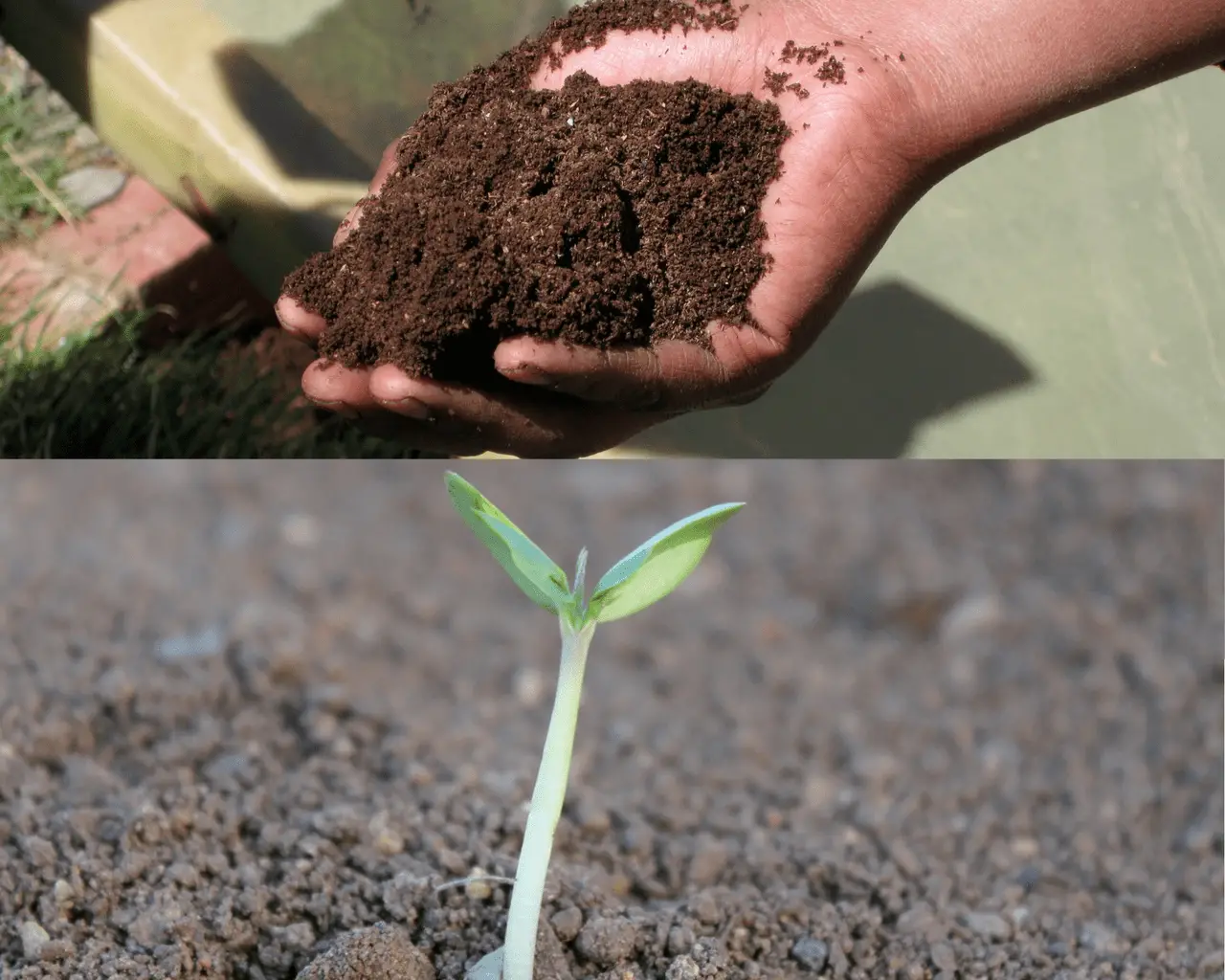Choosing to use topsoil or compost entirely depends on the need of your garden. Topsoil will add bulk to your sandy soil, and compost will amend and add nutrients. For better results on poor soil, you can mix topsoil and compost.
Table of Contents
Is Topsoil or Compost Better?
Choosing between topsoil and compost depends on where you want to use it.
Compost is preferred when applied to potted plants, flowers, or vegetables. It provides plants with hummus and high nutrients.
Topsoil is better when used on a large plot of land that has eroded or is sandy or clay-based. It adds a soil layer suitable for planting your veggies, fruits, and plants.
Usually, compost has more nutrients than topsoil. However, topsoil is better at retaining its structure and holding moisture longer than pure compost.
Compost vs. Topsoil: Key Differences
Quality topsoil is mostly used when you want to build a garden or as a landscape filler. It’s also an excellent choice for raised beds.
However, It does not necessarily have high nutrients; its nutrient level varies depending on the environment.
Compost is used for soil amendment. It improves soil fertility when landscaping, gardening, organic farming, horticulture, or urban agriculture.
The benefits of composting include adding nutrients, soil conditioning, and adding beneficial microorganisms to your garden to help suppress pathogens.
Here are the key differences between compost and topsoil:
| Compost | Topsoil |
| Is made purely from decomposed organic materials. | It is the top layer of the soil. |
| It is prepared over a short period. | Happens naturally over a long period. |
| It is full of nutrients. | It does not necessarily have nutrients. |
| It is vital to soil amendment. | It is used in building up the soil level. |
| A compost works better as pot soil. | Suitable for large plots of land to increase the soil level. |
| It comprises plants, kitchen waste, yard waste, food scraps, and other organic materials that have decomposed over a short period under certain conditions. | It comprises slowly weathered roots and organic materials that have decomposed over a long period. |
| It is less compact when compared to topsoil. | It is more compact. |
| It does not retain water for longer when compared to topsoil. | It retains water for longer. |
| It is preferred to provide a burst of nutrients to plants. | It is preferred when adding a layer of soil to the garden. |
| The soil will not contain weed seeds since composting process uses high temperatures. | The soil will contain weed seeds. |
When To Use Topsoil?
A layer of topsoil is vital in adding bulk. You need it when starting your garden.
It can be used for:
1. Creating a New Lawn
A new lawn will require topsoil to grow. You can also add topsoil to an existing lawn where the soil may have been destroyed by erosion.
2. Creating a New Garden Plot
You want to start growing your vegetables, flowers, or fruits, but the soil is eroded, or the topsoil was removed.
Layers of new topsoil will need to be added wherever you plan to have your garden.
3. Creating raised beds
If you want landscape-raised beds, doing so with topsoil is the best way.
4. Improving existing soil
If your terrain is characterized by sandy or clay soil, there is no amount of compost that can fix it.
You must add topsoil to improve it.
When To Use Compost?
1. Use it as mulch
Compost can be used as mulch for your flower beds or vegetable garden.
When applied to the soil, it naturally helps water retention, prevents weeds from sprouting, and adds nutrients to the plants.
2. Use it for your potting soil
Compost is vital for potting plants. Potting plants have a small surface area to grow and spread; adding compost brings nutrient-rich organic matters closer to the roots.
Adding peat moss to your compost will improve its water retention capacity.
3. To feed your perennials plants
Perennial plants love compost; it maintains them healthy and blooming regularly.
4. To act as a top dressing for garden beds
Adding a layer of compost to garden beds improves water retention and runoff.
5. For growing eggplants, squash, melons, and tomatoes
These plants are heavy feeders that require a lot of nitrogen to thrive, and compost ensures a high nitrogen level.
When To Use Compost Instead Of Topsoil?
There are instances when you can choose to use only compost. One of the cases is when using it as potting soil.
Quality compost is better on pot soils because plants grown in pot soil have less space to access nutrients. Adding only compost to the pots will enable their roots to easily access vital nutrients in a small space.
Besides the potting plants, many of our gardens already have topsoil, thereby canceling the need to add more. The soil only needs compost for soil amendment and to add nutrients for healthy plant growth.
Choosing to prepare your compost is a cheaper alternative than buying topsoil. The composting process is also easy and takes less time.
Can You mix Compost and Topsoil?
Mixing compost and topsoil is ideal.
Compost is prone to drying out easily. However, when you mix it with topsoil, the plants benefit from well-balanced garden soil that retains moisture.
High-quality topsoil will provide a good place for the roots’ growth and compact soil for water retention, while compost will provide robust nutrients. A soil mix of loam topsoil and compost will be the best.
Experts advise that you mix topsoil and compost to a ratio of 4:1. The mixture should have 80% topsoil and 20 % compost.
Failure to do this can lead to a garden soil with a high nitrogen level that may dry out plants or much less compost that may not give your garden enough nutrients.

